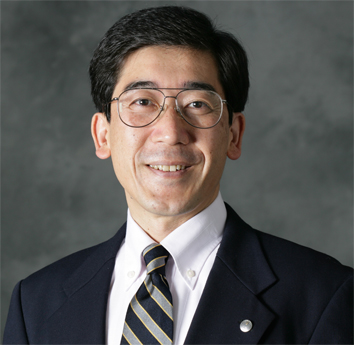|

Hideyuki Takagi, Kyushu University, Japan
Hideyuki Takagi had worked for the Central Research Laboratories of Matsushita Electric Industrial Co., Ltd. from April, 1981 to March, 1995. During these 14 years, he has researched on software engineering, speech recognition, neural networks, fuzzy systems, and genetic algorithms.
He was a Visiting Industrial Fellow of the University of California at Berkeley from October, 1991 to September, 1993, hosted by Prof. Lotfi A. Zadeh of Computer Science Division. Besides his visiting research, he played an educational role through research projects and technical meeting with students, and BISC special seminar on Soft Computing of Computer Science Division.
He has worked for Kyushu Institute of Design since April, 1995 as an Associate Professor. He belonged to Department of Acoustic Design in 1995 - 1999 and Department of Art and Information Design in 1999 - 2003. Kyushu Institute of Design and Kyushu University merged into one on October 1, 2003, and his affiliation name changed to Facullty of Design, Kyushu University.
Prof. Takagi is interested in Computational Intelligence such as neural networks, fuzzy systems, evolutionary computations, and other so-called Soft Computing technologies, especially cooperation of these technologies. Currently, his interest focuses on Interactive Evolutionary Computation which aims the cooperation of human and evolutionary computation. He is also interested in signal processing and human-machine interface. He has worked for IEEE SMC Society as the Vice-President, the Chair of Technical Committee on Soft Computing, and an Associate Editor of IEEE Trans. on SMC-B. See Detail Profile at: http://www.design/kyushu-u.ac.jp/~takagi
Abstract
Interactive Evolutionary Computation: Acceleration Research and Applications for Human Science
We introduce two research topics in Interactive Evolutionary Computation
(IEC); one is IEC accelerations and another is new IEC applications for
human science.
Firstly, we introduce some acceleration techniques that are applicable
to both EC and IEC. They include new elite strategy based on landscape
approximation, paired comparison-based differential evolution (DE),
DE/gravity vector, DE/moving vector, and others. Note that EC
acceleration techniques are applicable to IEC only when they are effective
even if population size is small and running generations are limited.
Secondly, we introduce a new IEC application domain, human science.
Since IEC is a technique for optimizing a target system based on fitness
from an IEC user, we may obtain the human characteristics by analyzing
the optimized target system, which corresponds to reverse engineering.
We show such applications such as measuring mental dynamic range, IEC
based on physiological feedback, analyzing auditory characteristics though
IEC optimization of hearing-aids and cochlear implants.
|



